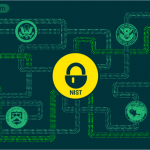
Small USB drives keep causing big security threats, including malware and loss of critical data
The findings from the latest Honeywell Industrial USB Threat Report show that the severity of cybersecurity threats caused by USBs to operational technology (OT) systems doubled over a 12-month period. The cybersecurity threat data was collected from hundreds of industrial facilities globally and the results validate the dangers posed by infected USB drives to industrial environments. According to the report, USBs keep being a significant threat vector, and USB-borne malware is still a high-potency threat. Past research has already shown that removable USB media devices are among the top risks impacting industrial control systems. Since the last USB Threat Report published in 2018, there has been an increase in the frequency and the impact of USB-borne attacks. The new Honeywell report shows that the number of threats targeting OT systems nearly doubled from 16 to 28%, while the amount of USB-borne malware that had the potential to cause a major disruption in an industrial control system more than doubled, from 26% to 59%.
While USB devices offer an easy, inexpensive, and convenient way to store and transfer digital files between computers, these same characteristics make them a target for cyberthreats. Cloud services are becoming more popular both in terms of storage and transfer, but they cannot provide all of the benefits USB flash drives can. Detecting and preventing data leakage can be difficult due to the small size and ubiquity of USB drives. Preventing a system compromise from malware carried on the USBs also poses challenges. Furthermore, USB-based threats are not limited to storage drives, as any device with a USB including phones and printers can become a threat vector. Given the continued popularity of USB devices – and the expansion of IoT – reducing the risks posed by USB attacks is essential to an organization’s cybersecurity.
How Endpoint Protector reduces USB threats?
Besides increasing employee awareness of the risks posed by USBs, companies should adopt cybersecurity tools that help to protect against inherent threats. Data Loss Prevention solutions that come equipped with device control features can help address this issue.
Endpoint Protector’s Device Control module offers a number of tools that allow organizations to gain full control of USB devices and peripheral ports, as well as to control or block unauthorized devices. By using our solution, accidental or intentional data leaks can be prevented, and the risks of USB malware and BadUSB attacks can be minimized. Being one of the most advanced device control software on the market, Device Control comes with several standout features.
To reduce the risk of USB-related threats, device security is enforced by granular access rights and easy-to-define policies. With our solution, the majority of known USB device types can be easily managed, and it also allows the lockdown of USB ports, thus restricting unauthorized devices from accessing endpoints and sensitive data. Offline Temporary Password (OTP) is a feature built for occasional emergencies that can arise in work environments, giving administrators the possibility to generate a password that grants temporary unrestricted access to a specific device, computer, or user. With Device Control, companies can also assign trust levels to devices based on their level of encryption.
For companies with BYOD policies in place, time and network-based policies are an especially useful feature, allowing admins to set different access rights depending on whether a computer is being used outside business hours or outside the company network. Last but not least, Endpoint Protector is a cross-platform solution available for Windows, macOS, and Linux, thus it can protect the entire network.If you’re concerned about protecting your sensitive data and minimizing USB-related threats, we invite you to get in touch and learn how we can support you in your efforts with our Device Control solution.
Download our free ebook on
Data Loss Prevention Best Practices
Helping IT Managers, IT Administrators and data security staff understand the concept and purpose of DLP and how to easily implement it.















